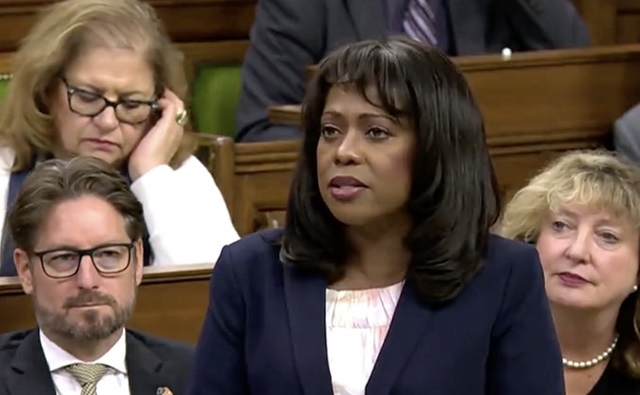Great Reset
Canadian assisted suicide data suggests over 15,000 chose euthanasia last year

From LifeSiteNews
With a slightly higher population than Canada, the state of California also legalized euthanasia in 2016. From 2016 to the beginning of 2023, 3,349 Californians ended their life by euthanasia. In that same time span 44,958 Canadians died by euthanasia.
As we await the federal government’s release of Canada’s 2023 euthanasia data, last week British Columbia released it’s 2023 provincial euthanasia data.
According to the BC Medical Assistance in Dying 2023 report there were 2,767 reported assisted deaths, up by 10 percent from 2,515 in 2022.
It is concerning that “other conditions” represented 32.9 percent of the BC assisted deaths in 2023. Other conditions were reported under these categories:
Autoimmune Condition 2.4%, Chronic Pain 24.8%, Diabetes 9.8%, Frailty 60.5%, Other Comorbidities* 52.1%.
READ: Canadian hospice society provides ‘Guardian Angels’ to protect patients from euthanasia
Canada’s MAiD law does not require that a person be terminally ill. Diabetes, frailty, chronic pain, and autoimmune conditions are usually chronic and not terminal conditions.
The report does not indicate the conditions that comprise “Other Comorbidities” yet the report indicates that mental disorders, as a comorbidity, is within that category.
Euthanasia for mental disorders alone is not permitted in Canada but if a person has a mental disorder and another comorbidity (condition) then the person can qualify to be killed by MAiD.
The report excludes any important information, such as an analysis of questionable deaths or a further examination of why a person actually asked to be killed, rather it only includes their condition.
Canada’s euthanasia statistics
On February 6, 2024 I predicted that there were approximately 16,000 Canadian euthanasia deaths in 2023. At that time I had less data.
Based on the data from Ontario, Quebec, British Columbia, Manitoba, Alberta, and Nova Scotia, I now predict that there were approximately 15,280 Canadian euthanasia deaths in 2023. Here is how I came to that prediction:
%2002.jpg?resize=432%2C360&ssl=1)
CBC Radio Canada published an article on March 9, 2024, stating that there was a 17 percent increase in Québec euthanasia deaths with 5,686 reported deaths representing 7.3 percent of all deaths, which is the highest rate in the world in 2023. The Radio Canada report was based on the Quebec euthanasia deaths between January 1 and December 31, 2023.
The Office of the Chief Coroner of Ontario released the December 2023 MAiD data indicating that there were 4,641 reported euthanasia deaths in 2023, which was up by 18 percent from 3,934 reported euthanasia deaths in 2022.
Alberta Health Services reports that there were 977 reported assisted suicide deaths in 2023, which was up by more than 18 percent from 836 reported assisted deaths in 2022.
The Nova Scotia Medical Assistance in Dying data indicates that there were 342 reported assisted deaths in 2023, which was up by more than 25 percent from 272 in 2022.
READ: Dame Cicely Saunders began the great work of modern palliative care. Let’s continue it
An article published by Global news, which may only be preliminary data, indicated that there were 236 reported Manitoba assisted deaths in 2023, which was up by 6 percent from 223 in 2022.
The BC Medical Assistance in Dying 2023 report stated that there were 2,767 reported assisted deaths, up 10 percent from 2,515 in 2022.
According to the data from Ontario, Québec, Alberta, Nova Scotia, Manitoba, and British Columbia, there were 14,413 assisted deaths in 2023 (in those provinces) which is up by 15.4 percent from 12,490 assisted deaths in 2022 (in those provinces). Since the total number of Canadian assisted deaths in 2022 was 13,241, I can predict that there were approximately 15,280 Canadian assisted deaths in 2023.
Reprinted with permission from the Euthanasia Prevention Coalition.
Censorship Industrial Complex
Justice Centre campaigning Canadian provinces to follow Alberta’s lead protecting professionals

Justice Centre launches national campaign to stop ideological overreach in regulated professions
The Justice Centre for Constitutional Freedoms announces the launch of a national campaign urging all provinces to adopt legislation that restores professional regulators to their proper role of overseeing competence and ethics, rather than compelling speech or imposing political ideology on regulated professionals who serve the public.
Across Canada, professionals such as doctors, nurses, teachers, social workers, engineers, dentists, lawyers and many others are governed by regulatory bodies created to uphold technical competence and ethical standards. Instead of focusing on those core responsibilities, however, many regulators have begun embedding political or ideological content into mandatory courses, codes of ethics and continuing education requirements.
At the same time, professionals are increasingly being investigated or disciplined not for misconduct, but for expressing personal views or declining to endorse political positions.
To help Canadians take action, the Justice Centre has created an online tool with a ready-to-send letter that goes directly to the provincial representatives responsible for the relevant legislation. All the user needs to do is select their province and enter their information, and the tool automatically delivers the letter to the appropriate recipient.
The prepared letter outlines three essential legislative amendments:
- prohibiting regulatory bodies from pursuing political objectives;
- prohibiting regulators from monitoring or controlling the speech of their members; and
- prohibiting regulators from embedding political or ideological content into definitions of competence and ethics.
Alberta is the first province to take meaningful steps toward addressing this growing problem. Its proposed legislation, called the Regulated Professions Amendment Act, is designed to prevent regulators from compelling speech, advancing political objectives or embedding ideology into definitions of competence and ethics.
The Justice Centre encourages all Canadians to visit our website today to take action and help protect the independence of regulated professionals.
MAiD
101-year-old woman chooses assisted suicide — press treats her death as a social good

From LifeSiteNews
It must be said: The media’s relentless glamorization of suicide is repulsive and shameful.
It was once standard press practice to treat suicide as a tragedy. But since assisted suicide and euthanasia are now presented as the final front in the war for total autonomy, “human interest” stories now push the interests of the death lobby and treat suicide as a social good. The message this sends to the suicidal and desperate is clear.
The latest example of this is a December 2 story in Le Journal de Quebec on the assisted suicide of 101-year-old Paulette Fiset-Germain. She died by lethal injection in her room at the Manoir Cap-Santé on December 1. The opening line of the story almost glows with approval:
A centenarian who had lost none of her intellectual capacity is now shining in the sky after choosing medical assistance in dying on Monday.
Fiset-Germain had been living independently and alone only a few weeks ago but suffered two falls and a stroke. Last week, she told the staff and fellow residents that she wanted to die by euthanasia — or what in Canada is called “MAID.”
“I started to have trouble using the walker, I have one hand that I can’t use, the other one that I have trouble with, I can’t see one side anymore,” she said. “I’m at the end. You know when the glass starts to spill, it’s time to do something. In addition, you have trouble 24 hours a day, you don’t sleep. We’re going to close the loop.”
The Journal emphasized that she said this in a “very serene” tone of voice — and made it clear that Fiset-Germain’s family were supportive. “My children accepted my decision because they know me, they know that I am ready for it,” she said. “It started when I broke my hip and couldn’t do anything anymore. My decision doesn’t cause me any stress. I can’t wait. When the doctor agreed, I said, ‘You’re giving me a really nice gift.’”
To be clear: That “gift” is a lethal injection. She chose suicide by doctor — and the media celebrated it. That is nothing short of glamorizing suicide. In fact, the Journal made clear that Fiset-Germain was “grateful for the opportunity (of) medical assistance in dying,” but that she hopes it is expanded. In fact: “The last moments of Mme Fiset-Germain will also be the subject of a documentary.”
So, in addition to the puff pieces about her suicide, we’re going to get death porn propaganda that will be used to push for more suicides, likely (I suspect, although no details are yet available) produced in partnership with the vultures at Dying with Dignity.
“It’s too tight,” the elderly woman explained of Canada’s euthanasia regime, which is so notoriously loose it has been condemned by the United Nations. “We have to expand to relieve many people. There are others who are embarrassed, who are afraid of their children’s reaction. Mine told me, ‘It’s my choice, it’s my body, it’s my life.’” Funny — it seems like whenever someone uses that phrase, somebody is about to get killed.
The Quebec press is not known for its glowing coverage of religious beliefs, but for the suicidal Fiset-Germain, they made an exception. “Since I was little, I believe that when you die you become a star. When you see a shooting star, it’s someone who has left and is looking for a place,” she explained. “I received very good care here and I am very happy to end my days here and die in my bed.”
The article made sure to mention that she will “donate her body to science,” and quoted one of her reminisces of working as a nurse during the war, when she met a badly wounded soldier: “He was 20 years old and had lost both eyes, both arms and both legs. He asked me if he could hear his mother’s voice. I arranged for him to go to his house to hear it. I don’t know what happened to him next, but at that time, you couldn’t ask for medical assistance in dying.”
Her best friend offered her almost-too-enthusiastic support. “It’s a good decision,” her cousin and best friend Louisette Huard said. “After the life she’s had, the physical state she’s in.” I must say that if my best friend thought my suicide was a “good decision,” it would certainly heighten my suicidal ideation, but perhaps that’s just me.
Only the head of Manoir Cap-Santé and another friend were willing to express their grief. “It hurts us, but we respect her decision,” Guylaine Dufresne said. Her friend, Adelyre Goeguen, was blunter: “I didn’t like it right away. It was still a shock, and I don’t accept it at all.”
That, in case you’re wondering, is the correct response to the suicide of a close friend.
-

 MAiD2 days ago
MAiD2 days agoFrom Exception to Routine. Why Canada’s State-Assisted Suicide Regime Demands a Human-Rights Review
-

 Business2 days ago
Business2 days agoCarney government should privatize airports—then open airline industry to competition
-

 Alberta2 days ago
Alberta2 days agoCarney’s pipeline deal hits a wall in B.C.
-

 Alberta1 day ago
Alberta1 day agoAlberta Sports Hall of Fame Announces Class of 2026 Inductees
-

 Censorship Industrial Complex1 day ago
Censorship Industrial Complex1 day agoConservative MP Leslyn Lewis slams Liberal plan targeting religious exemption in hate speech bil
-

 Business2 days ago
Business2 days agoWhat’s Going On With Global Affairs Canada and Their $392 Million Spending Trip to Brazil?
-

 Business2 days ago
Business2 days agoIs Carney Falling Into The Same Fiscal Traps As Trudeau?
-

 Energy1 day ago
Energy1 day agoCanada following Europe’s stumble by ignoring energy reality









